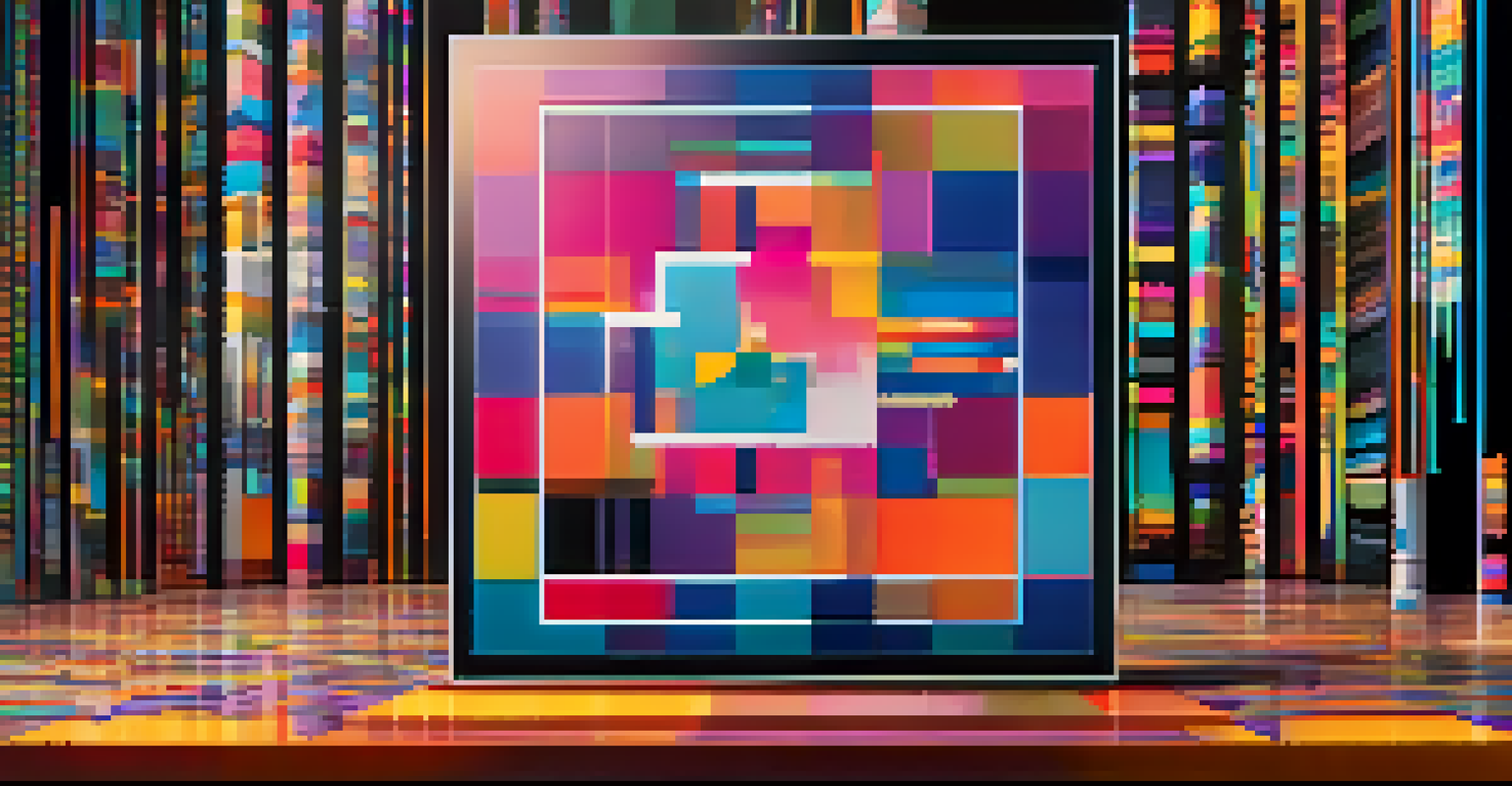Provenance: The Backbone of Ethical Art Transactions

Understanding Provenance in the Art World
Provenance refers to the history of ownership of a work of art. It traces the journey of an artwork from its creation to its current location. This documentation is crucial in assessing authenticity and value, making it a vital part of any art transaction.
Art is not what you see, but what you make others see.
For instance, consider a painting by a renowned artist. If it has a clear provenance that documents its previous owners, it adds to its credibility and market value. Conversely, a lack of provenance can raise red flags, suggesting potential forgery or theft.
In essence, provenance acts as a narrative that helps buyers connect with the artwork beyond its visual appeal. It tells a story that can significantly enhance its allure and desirability.
The Role of Provenance in Ethical Transactions
In the art world, ethical transactions are rooted in transparency and trust. Provenance plays a pivotal role by providing a clear lineage for artworks, thus ensuring that buyers know exactly what they are purchasing. This transparency helps to prevent issues related to stolen or looted art.

Imagine purchasing a sculpture that once belonged to a famous collector; knowing its history not only enriches your experience but also confirms its legitimacy. This assurance is invaluable, creating a sense of responsibility among buyers and sellers alike.
Provenance Ensures Art Authenticity
Provenance provides a documented history of ownership that boosts the credibility and market value of artworks.
Ultimately, ethical transactions foster a healthy art market, where integrity and trust are paramount. Provenance serves as the backbone of this system, guiding both new and seasoned collectors.
Provenance and Cultural Heritage Protection
Provenance is not just about art; it also plays a significant role in protecting cultural heritage. Many nations have laws that require documentation of an artwork's origins, especially for pieces that may have been acquired under questionable circumstances. This is crucial in preventing the illicit trade of cultural artifacts.
The value of art is in the story it tells, not just in the colors and shapes on the canvas.
For example, artworks looted during wartime often lack proper provenance, making them difficult to reclaim. By maintaining a clear record of ownership, we can help safeguard cultural heritage from exploitation.
Thus, provenance acts as a guardian of history, helping to ensure that artworks are appreciated in their rightful context. This commitment to ethical practices strengthens the bond between art and its cultural significance.
The Impact of Technology on Provenance Tracking
In recent years, technology has revolutionized the way provenance is tracked and verified. Digital tools and databases now allow collectors and institutions to maintain comprehensive records of artworks. This innovation not only streamlines the process but also enhances accuracy and accessibility.
For instance, blockchain technology is emerging as a game-changer in provenance tracking. By creating an immutable ledger of ownership, it ensures that every transaction is recorded transparently and securely, reducing the risk of fraud.
Technology Enhances Provenance Tracking
Digital innovations, like blockchain, are revolutionizing how provenance is tracked, making it more secure and transparent.
As technology continues to evolve, the art world will benefit from more reliable methods of provenance verification. This shift will further bolster ethical art transactions and empower collectors to make informed decisions.
The Challenges of Provenance Verification
Despite advancements, verifying provenance remains a challenging task. Many artworks have complicated histories, with gaps in documentation that can make tracing ownership difficult. This complexity can create uncertainty for buyers and sellers alike.
Consider an artwork that has changed hands numerous times over decades; each transition can leave behind a murky trail. The lack of comprehensive records may lead to disputes over authenticity and ownership, complicating transactions.
Therefore, addressing these challenges is essential for fostering trust in the art market. Ongoing research and collaboration among experts can help create more robust systems for provenance verification.
The Future of Provenance in the Art Market
Looking ahead, the future of provenance in the art market appears promising. As awareness of ethical practices grows, collectors are increasingly prioritizing provenance in their purchasing decisions. This shift is likely to encourage more sellers to provide detailed documentation.
Additionally, art institutions are recognizing the importance of provenance in building trust with their audiences. By adopting best practices for tracking and sharing provenance information, they can enhance their credibility and attract more collectors.
Collectors Shape Ethical Art Practices
By prioritizing provenance in their purchases, collectors support ethical standards and contribute to a responsible art market.
In this evolving landscape, provenance will continue to play a central role in ensuring ethical art transactions. As a result, both collectors and artists can benefit from a more trustworthy and vibrant art market.
How Collectors Can Ensure Ethical Practices
For art collectors, ensuring ethical practices starts with diligence and research. Before purchasing any artwork, it's essential to request provenance documentation. This step not only protects your investment but also supports ethical standards in the art community.
Engaging with reputable galleries and auction houses that prioritize provenance is another key strategy. These institutions often have established protocols for verifying ownership and authenticity, helping to mitigate risks associated with art transactions.

Ultimately, collectors play a vital role in shaping the future of ethical art practices. By making informed choices and valuing provenance, they contribute to a more transparent and responsible art market.